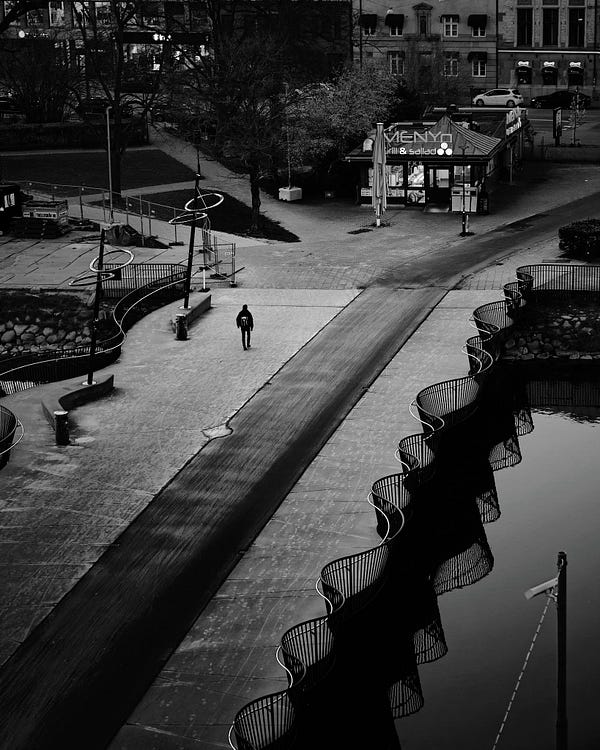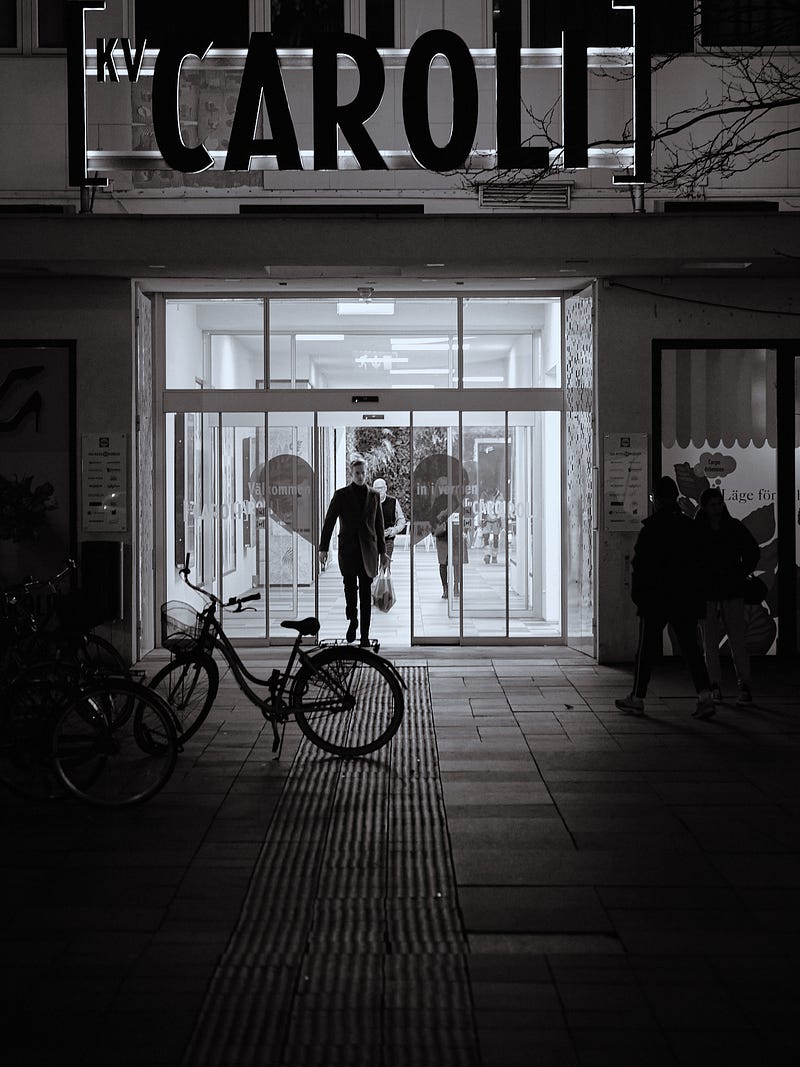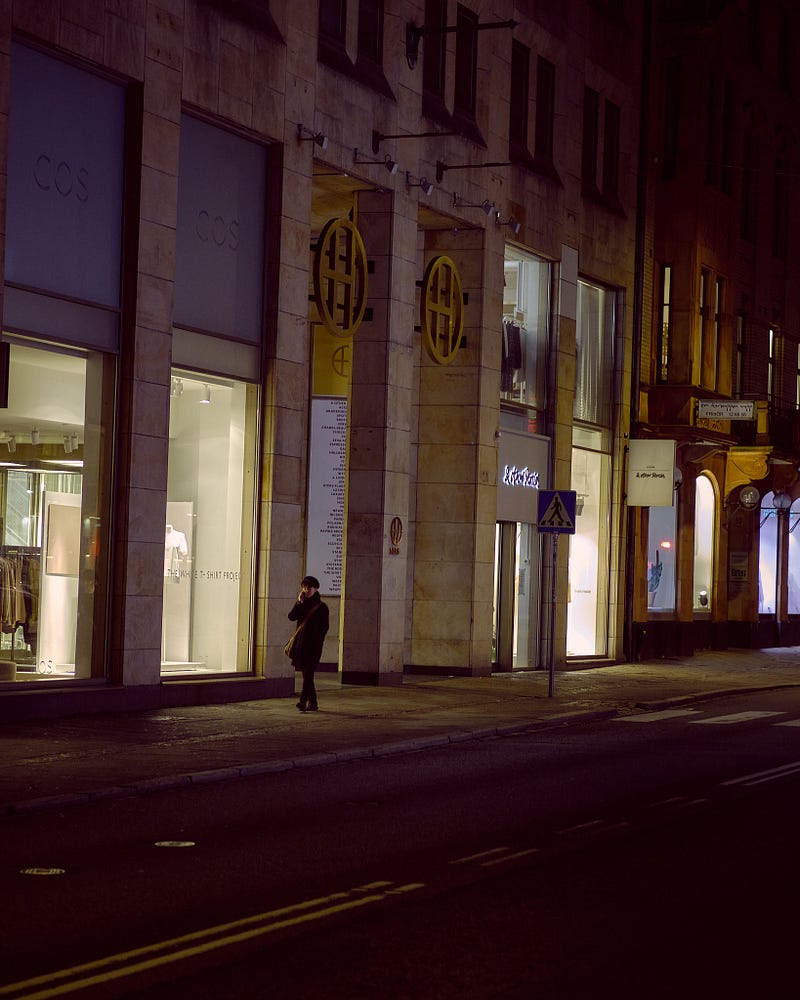There are no rules! Let’s get that out of the way. Street photography is plain and simple photography on, or of, an urban street. And you could even discuss if it needs to be an urban environment. However, when I set up some constraints or rules for myself, I become more creative, and I try to push it as far as possible.
When I took up street photography more seriously, I made up some rules for myself, what I wanted to capture, and how. These are the rules that I set for myself. You should under no circumstances follow these to a point, but I hope they spark some interested in …. well rules I suppose.
Faces are dull, people are interesting
Many street photographers are fascinated by the faces of the streets. Personly I think most people look quite dull. Even worse is a close-up of a startled person. Therefore I vowed to include a human element in my street photos, but keep humans in my images small and mostly anonymous. The focus should primarily be the environment and how we as humans fit into it.
Composition is king
Building on this. Faces being as dull as they generally are, good composition is there to save you: strong leading lines, juxtapositioning, s-curves and all of that good stuff. A good composition can elevate a mundane subject to something special.
The results
This makes me focus more on the environment. Finding interesting lines, colours, light and that sort of thing. And of course, I pushed it as far as possible, making the humans really small. The extraordinary thing is that we, as humans perceive the human element so strongly. Often this makes for quite interesting images compositional speaking.

Don’t disturb
Leave no trace is often heard when talking about nature photography, and the same applies to street photography. I don’t want to be noticed. I don’t mind being seen, but I’m there to observe not interact. Take pride in what you do, don’t hide behind corners. But don’t push a camera up someone’s face. Normal to slight telephoto lenses are great for this. I personally mainly used the excellent Fuji 35 & 50 mm f/2 lenses on my Fujifilm X-T20. But this is not about the gear, more about an attitude. Dare to step back! And still, take pride in your street photography. The last part is the most important.
The results
I capture moments in time, without disturbing it. The hardest part of the wintertime is that very little exciting things are going on in the streets. You have to be there, and you have to find interest in the mundane. And finding and using all available light, and sometimes push the ISO, even as high as 128 000 if needed.

Editing is a good thing
An image isn’t done when you’ve pressed the button; it just started. An image is done when you’ve edited it and printed it! Or perhaps more accurately presented it, online or in physical form. Also, remember to edit for your intended purpose. If an image is supposed to end up on Instagram, well edit it for Instagram! And remember to check it on your phone before posting.
The results
Images are elevated and sometimes saved in editing. An otherwise dull image can become something interesting. It’s free for all! I especially like to work with colour grading and colours in general. In my black and white images, I try to edit for black and white, where grey tones are king.

Title your images & present them to the world
I’m not just pretentious. I do believe an image deserves a title if you are serious about presenting it to the world. Think about it; how would you reference the image if it doesn’t have a title? It elevates the image to another level. Instead of discussing that image of that woman in front of the store, you’re discussing the image “Gallant”. To me, that makes things more interesting. I’ve also, of course, limited myself with titling. I use only one word as a title for my images. Easy to a start, harder the longer you stick with it. Perhaps it even leads to a larger vocabulary.
These where my primary rules now make your own. Maybe you’ll get a creative spark out of it.

These are my rules. Now make your own rules! Creativity thrives under restraints
